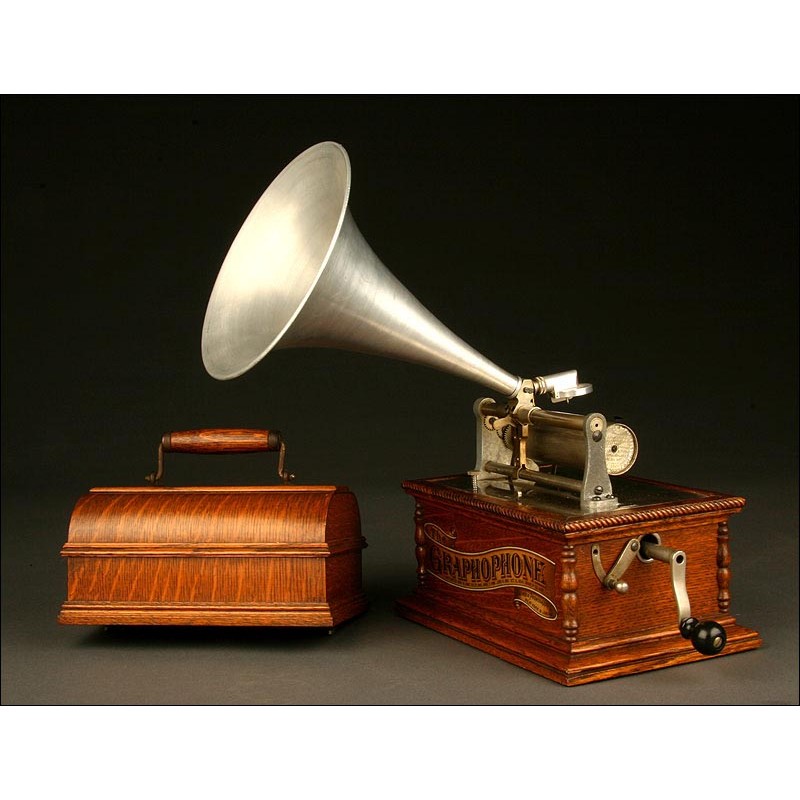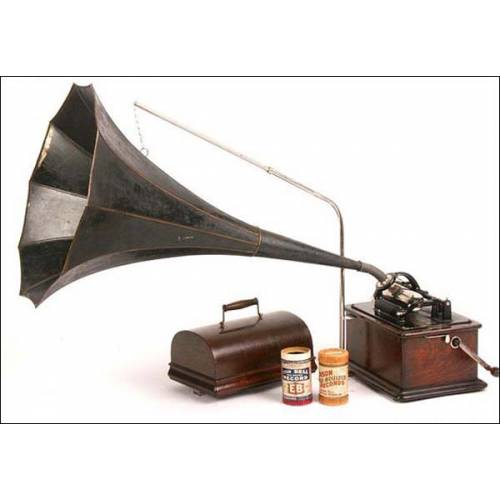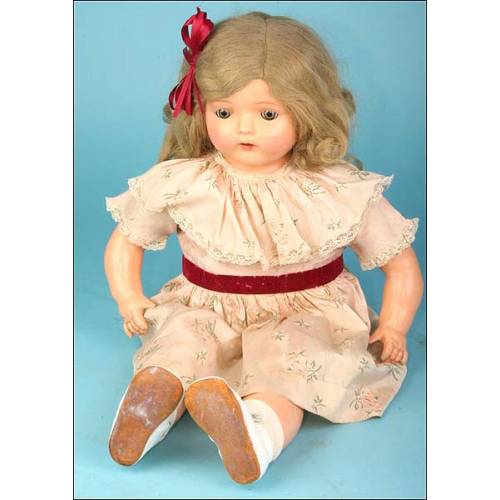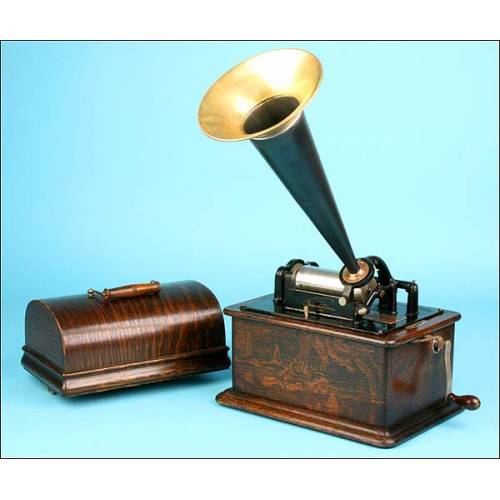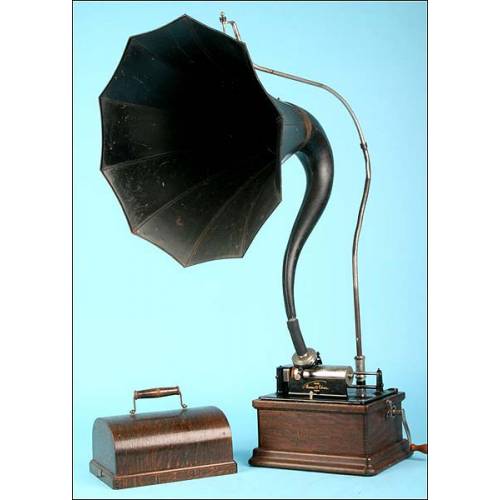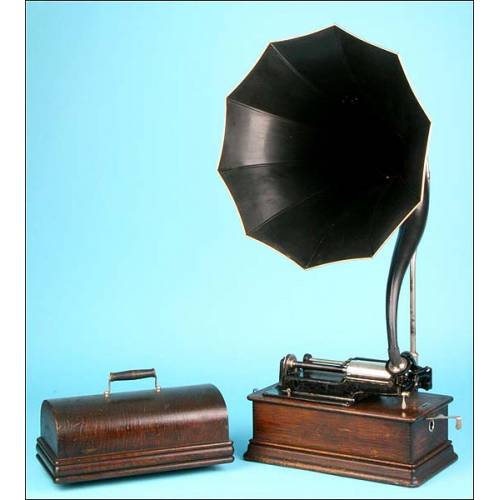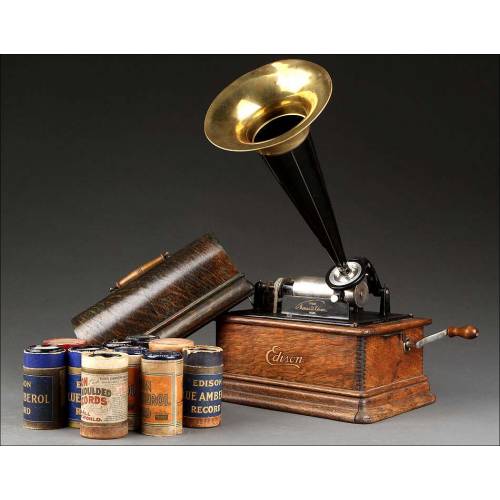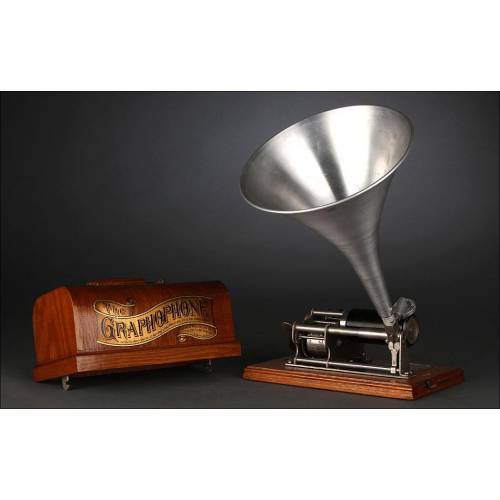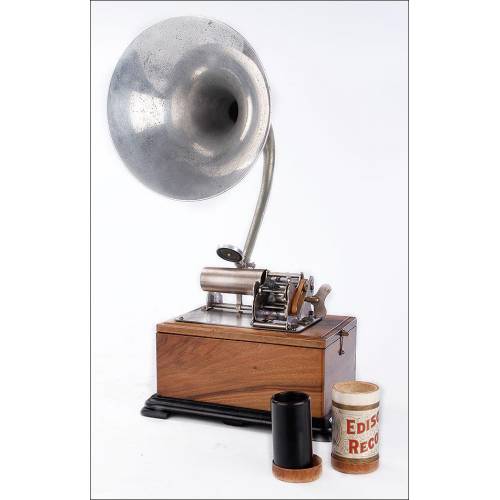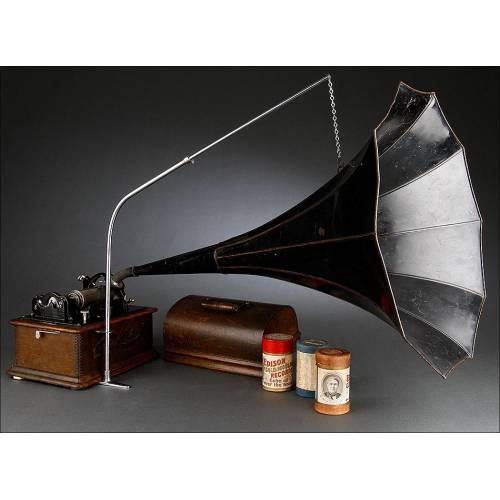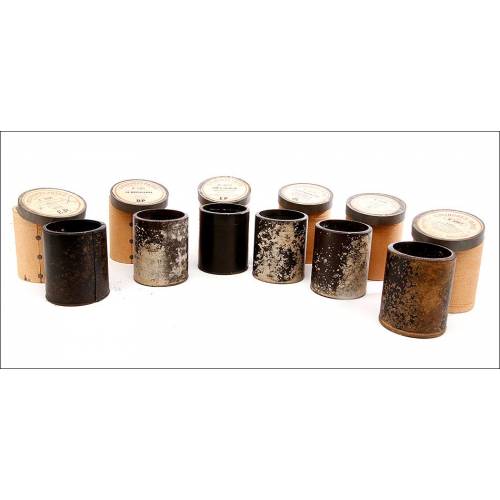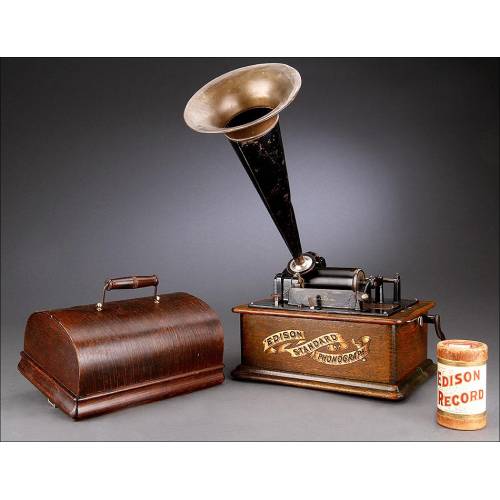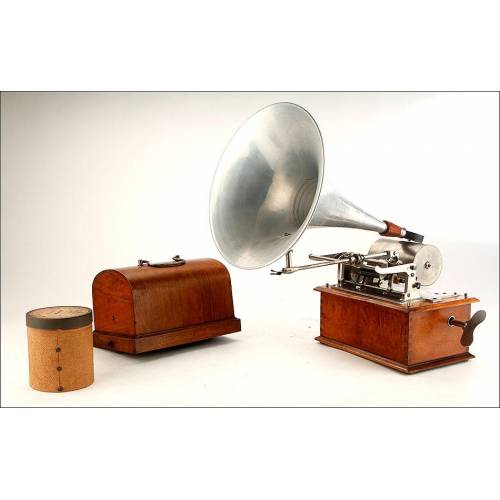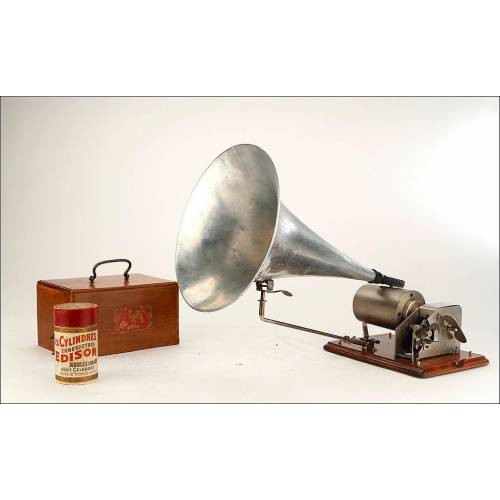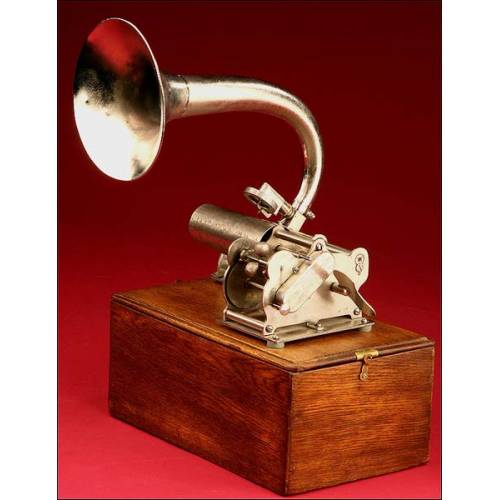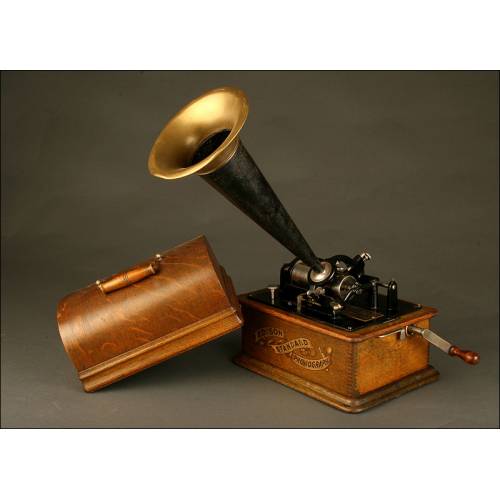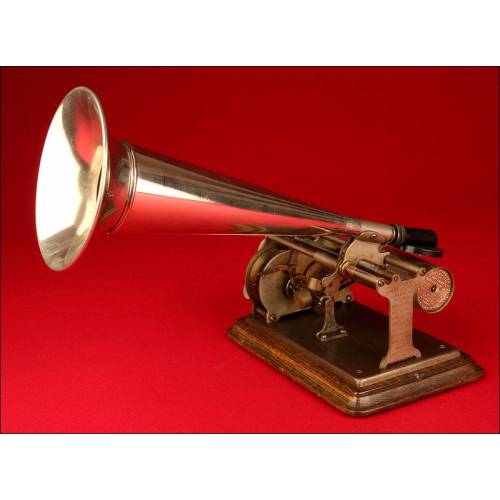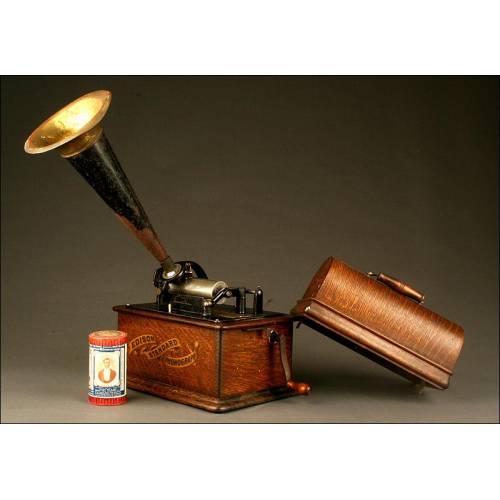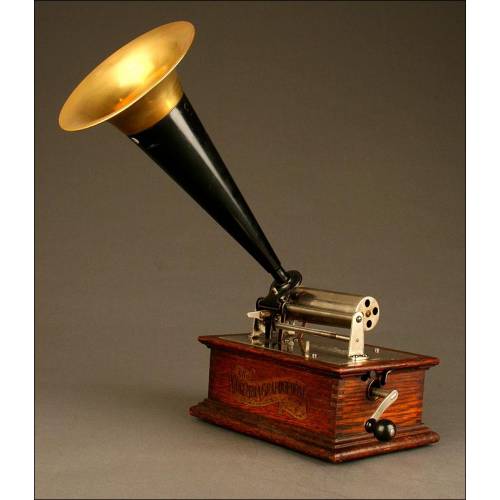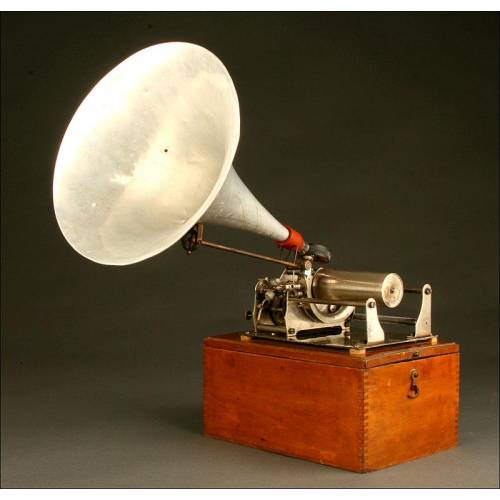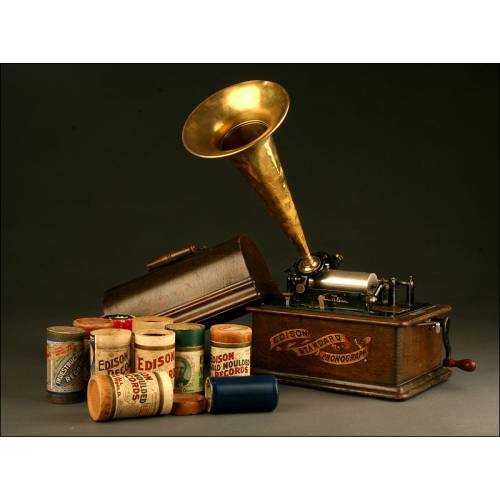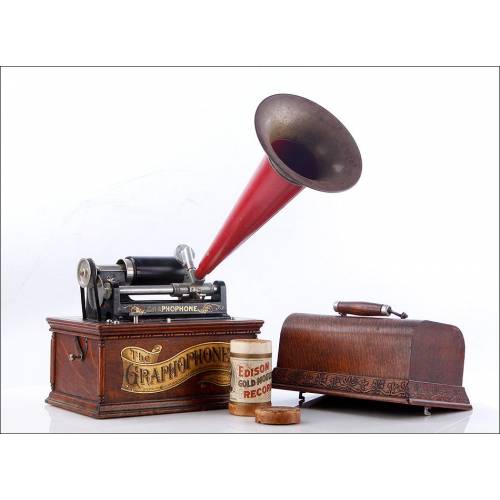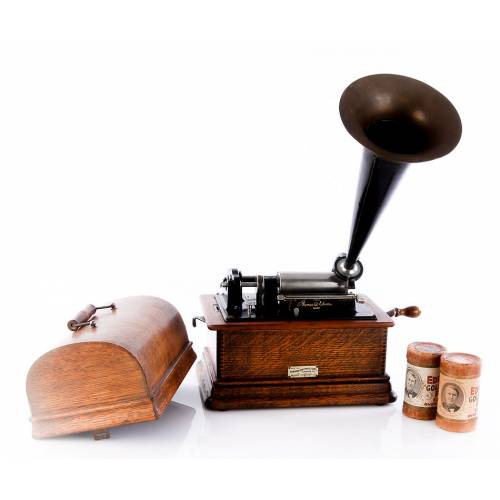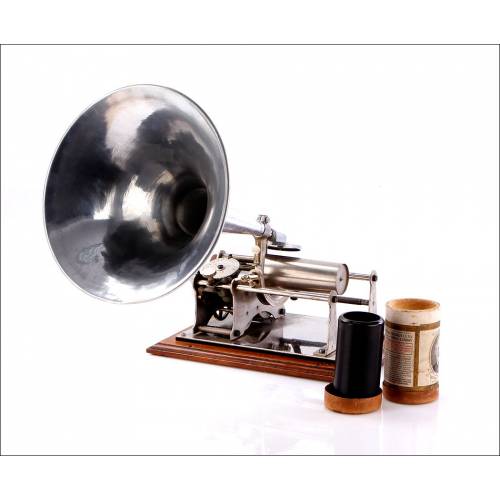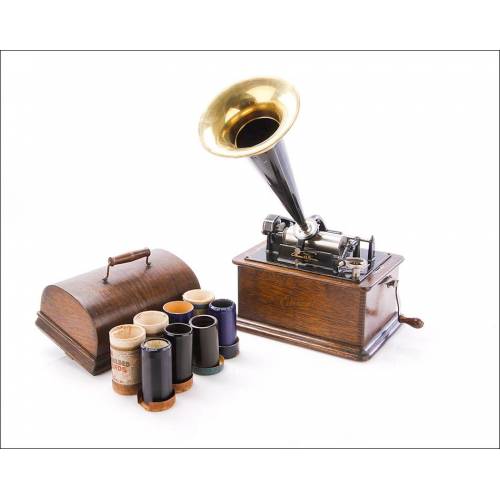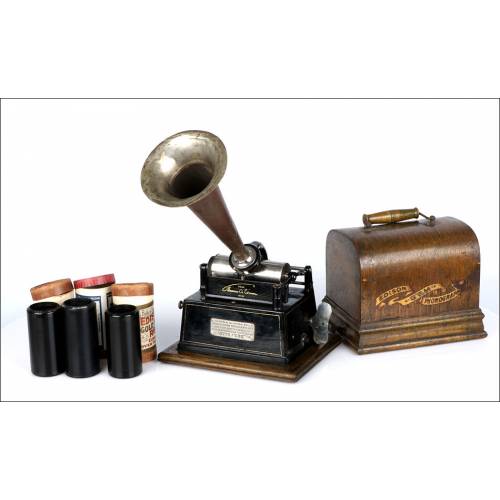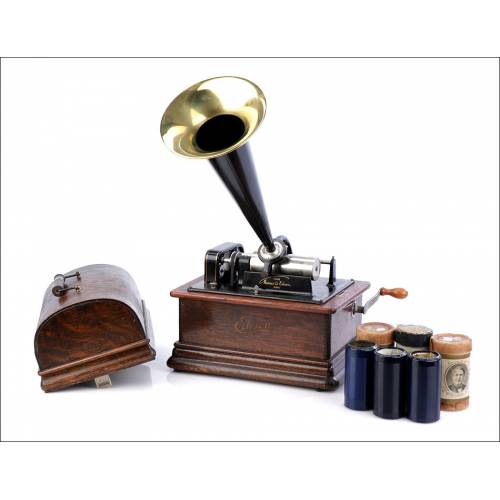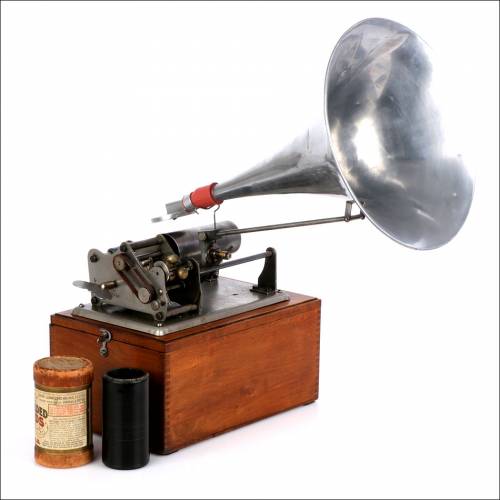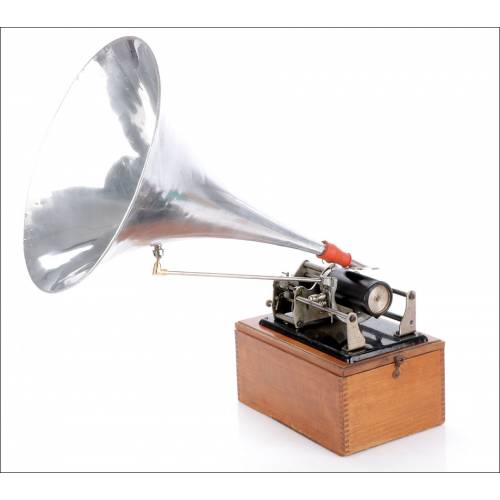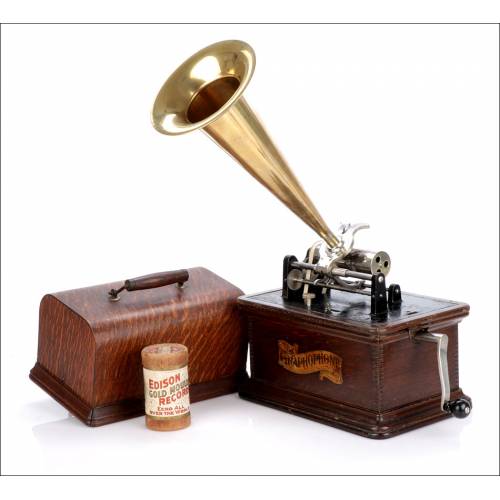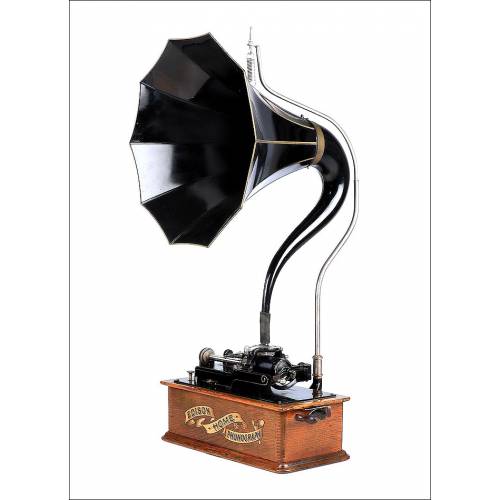J-486
Magnificent Columbia AA Phonograph, 1901. With protective case. Working.
Columbia AA Phonograph, 1901.
Sold!
Magnificent 1901 Columbia Model AA Phonograph. It is in a really superb state of preservation. It works well although it sounds a little low. It is in its original condition, unrestored, which gives this piece a great historical value. Essentially formed by the central cylinder, where the cylinders with the music are placed, thanks to the movement of the side crank the needle follows the grooves left on the cylinder in the recording, producing the sound of the songs it incorporates. On one of the sides of the base of the device the serial number of the piece can be seen: 712691. On the side of the cylinder is engraved COLUMBIA PHONOGRAPH COMPANY, New York. The beautiful silver-plated metal machinery sits on a raised quadrangular wooden base that serves as a support. On the front of the base is the Gramophone sticker, all original and in very good condition. On the back there is another circular sticker indicating that this piece was exhibited at the Universal Exposition of Paris in 1900. On the side is the original metal crank handle with glossy black knob in impeccable condition. Attached is a wooden top protector, which fits perfectly to the contour of the device and allows it to be transported more easily. The precious horn is also silver plated, although it is not the original, it harmonizes with the rest of the machinery, and makes this piece a very beautiful device aesthetically. The well-known American firm will be developed thanks to Alexander Graham Bell (1847-1922) and his laboratory located in Washington (District of Columbia). The more than well-known inventor directed his research to the electric-acoustic techniques that would allow him to obtain a sound recording and reproduction machine. He will try to improve the quality of the material on which the recordings are made, patenting his apparatus in the USA in 1886. In 1893 Bell's American Graphophone Company merged with the Columbia Phonograph Company. The firm decided to move its headquarters from Washington to New York without losing the name Columbia. From the beginning of the century, the firm establishes itself firmly in Europe. Paris becomes an important manufacturing center for Columbia cylinders, in order to meet the growing demand for them. Although the production of cylinders is carried out in Europe, at first the phonographs were imported directly from America, but gradually develop their own brand devices with great success in Europe as this fantastic example. The Universal Exhibition of Paris (1900) took place from April 15 to November 12, 1900 in Paris, France. In this type of exhibition, society could get a concrete idea of the incredible degree of development that the means of production had reached in all civilized countries, far surpassing even the most daring fantasies. The enthusiasm that had been taking possession of the widest technological circles, which saw in these exhibitions the way to make known their advances. Participating in one of these exhibitions had become an official form of representation. By going through the various galleries one could perceive the concrete state of an industry in the various nations and understand the state of a country in the various branches of industry. Devices such as the phonograph made their presentation in these exhibitions of the modern, entering the wheel of consumption and consolidating itself as a successful product. Fantastic piece of yesteryear that in its time was a true technological innovation.

